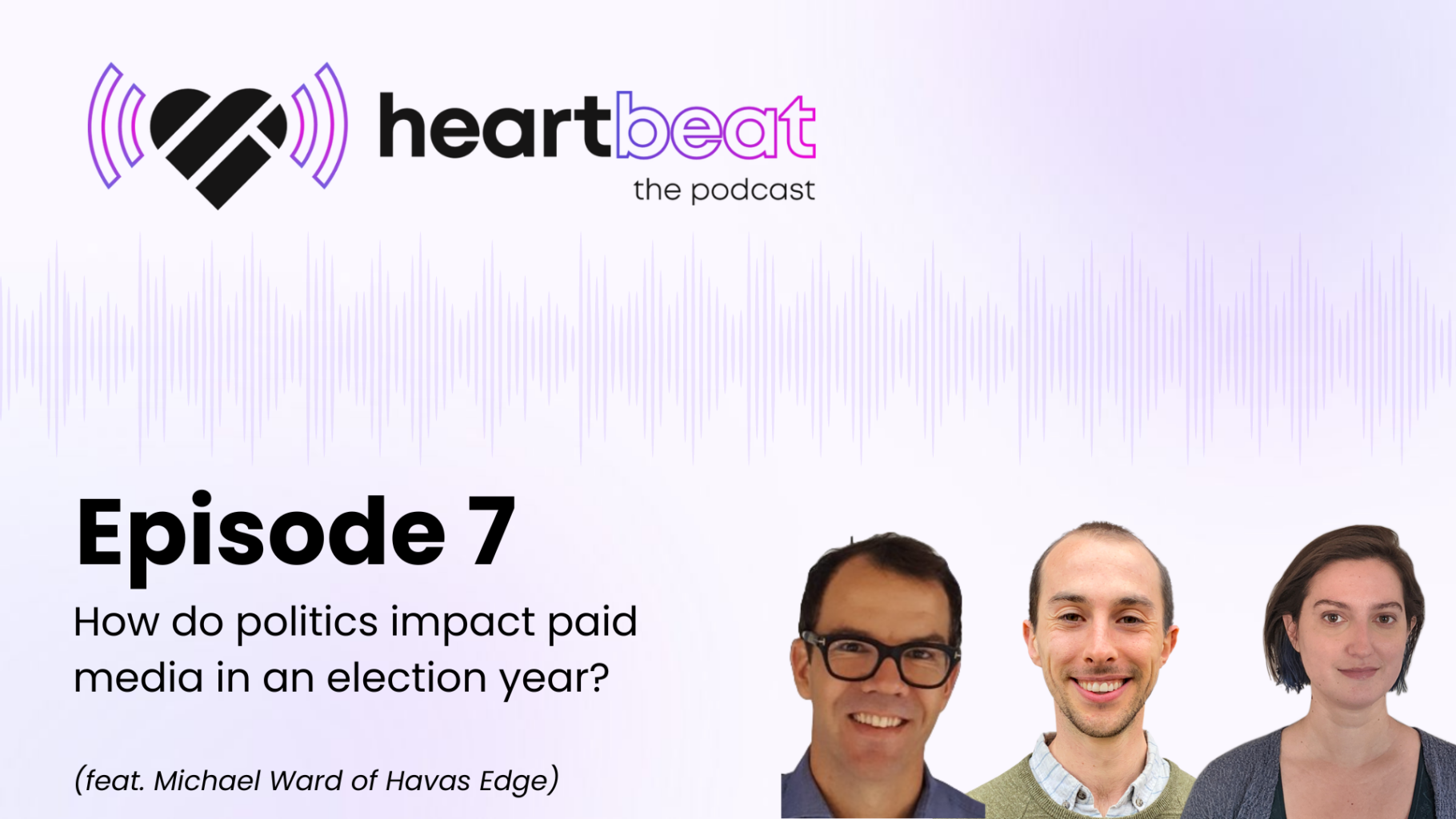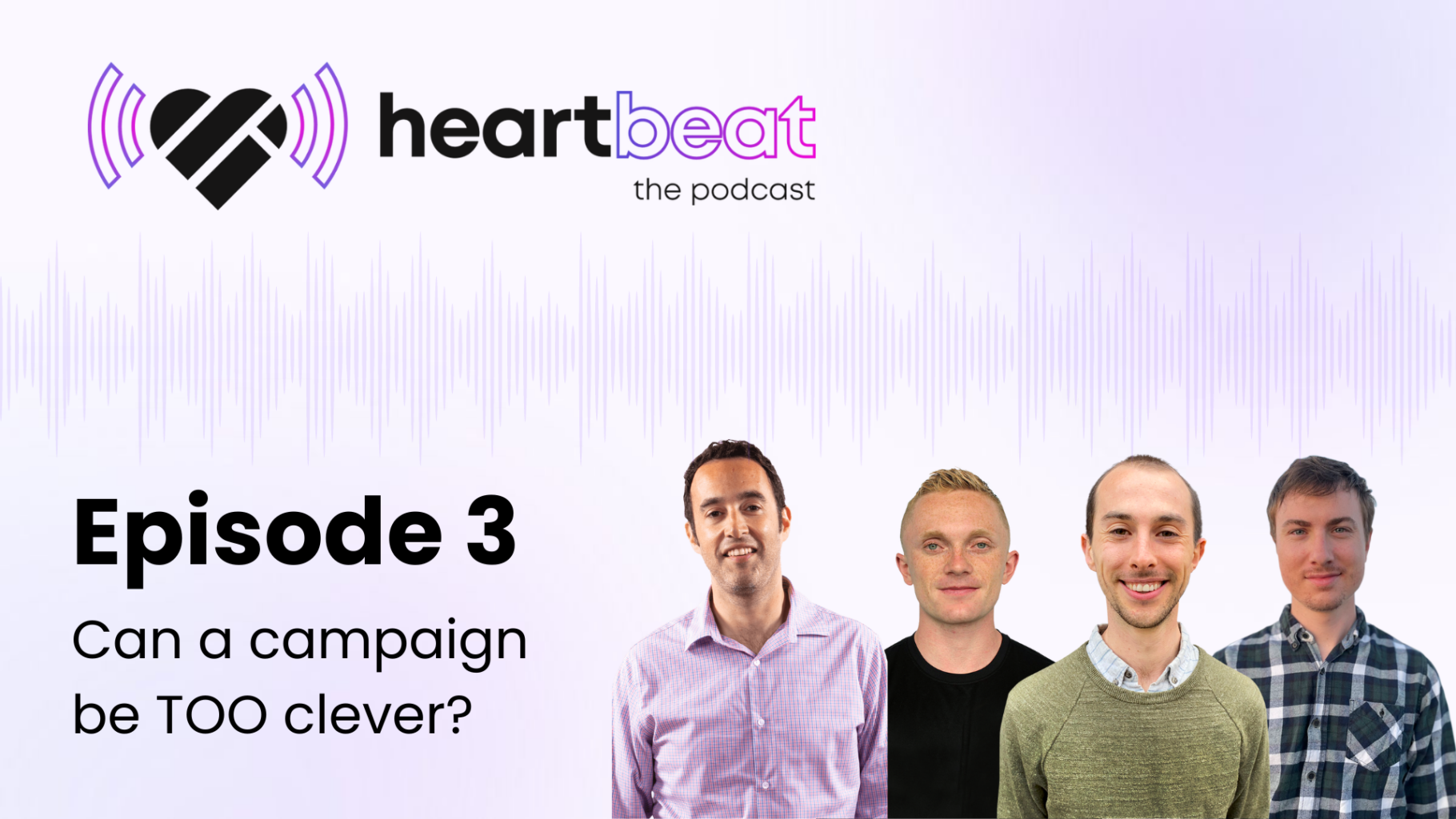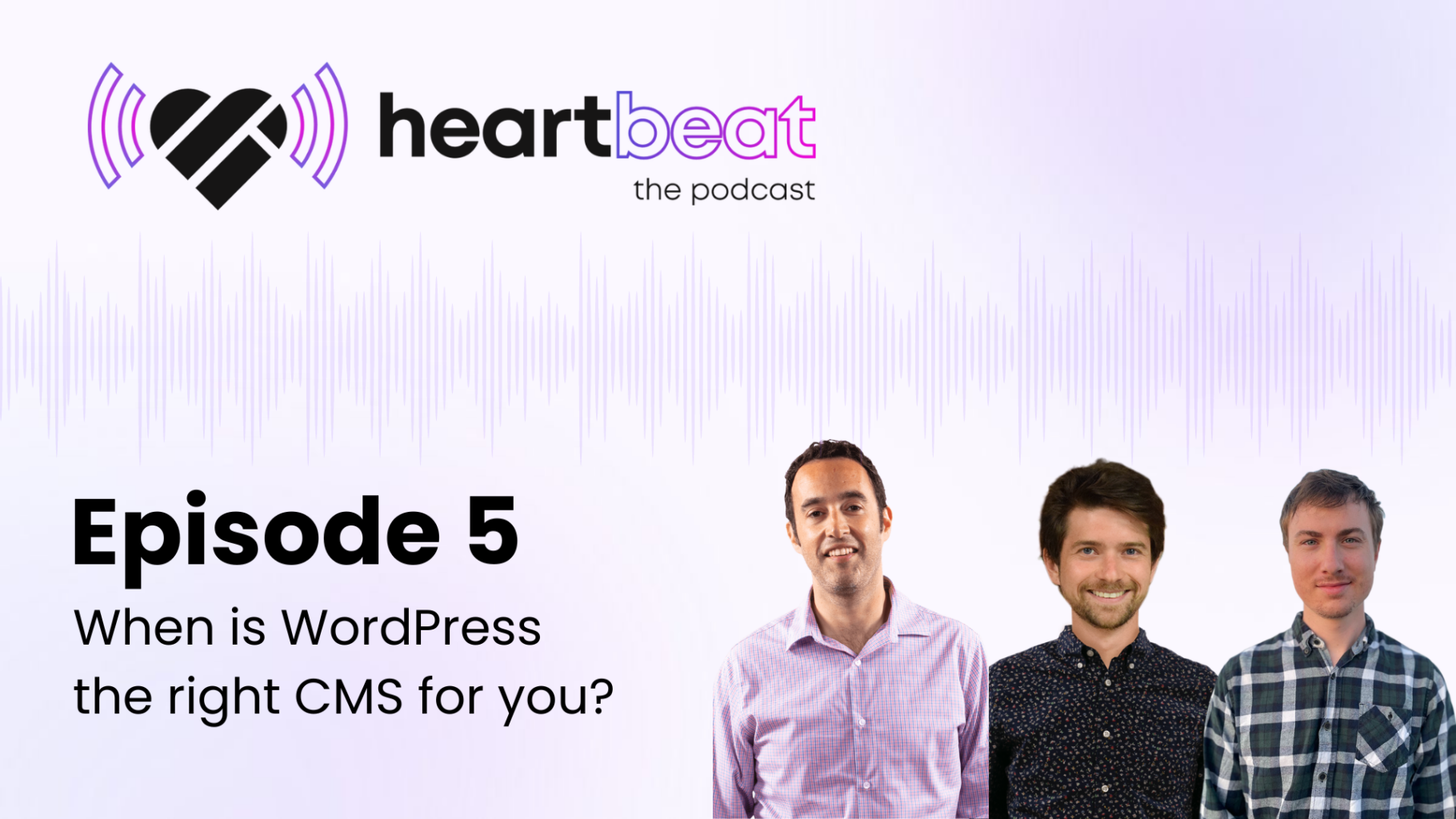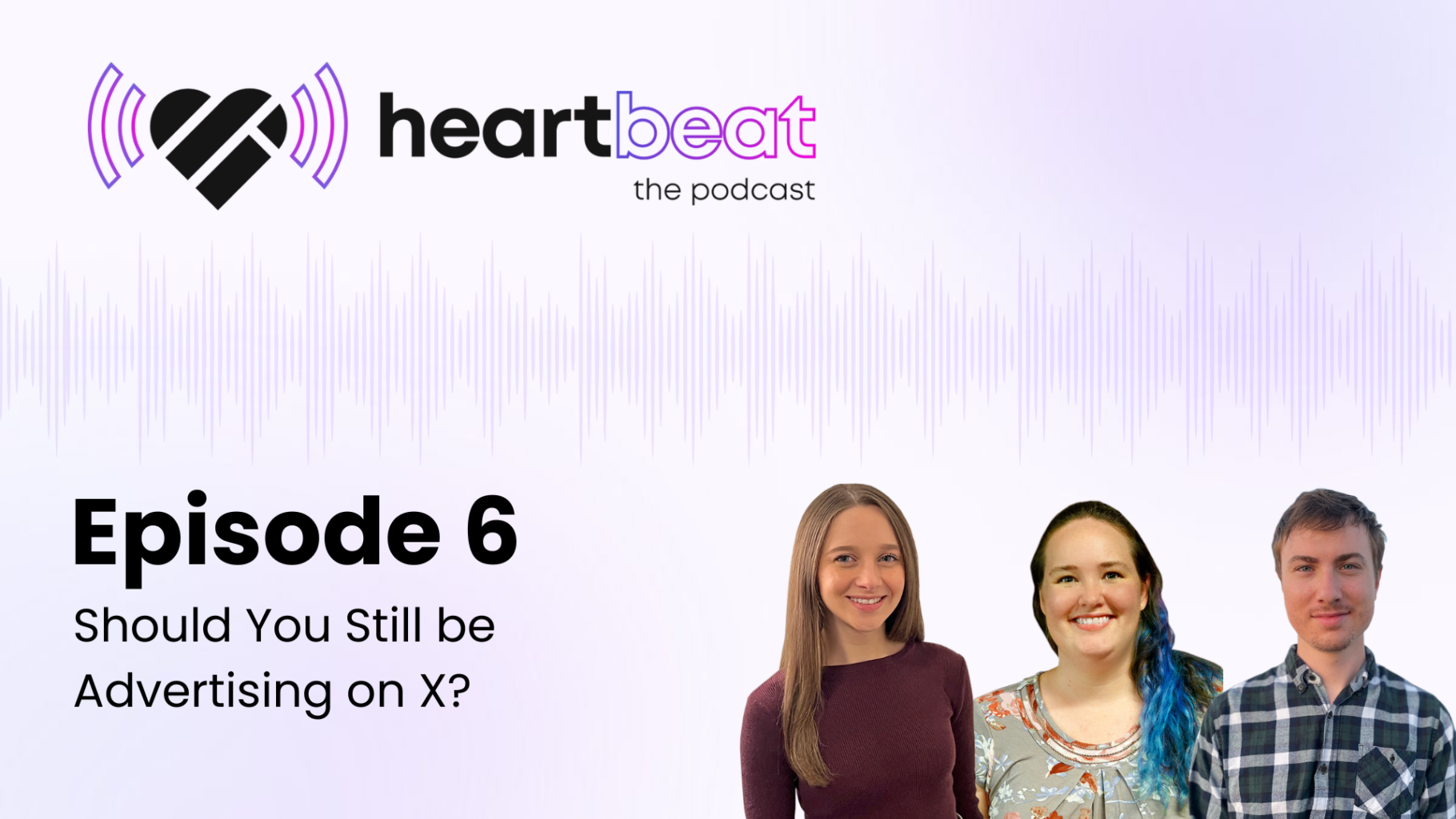In this episode of the Digital Impulse Heartbeat Podcast, Mary is joined by Roland and Michael Ward, VP of Integrated Client Services at Havas Edge, as we delve into the escalating landscape of political advertising, with projections estimating a $12.3 billion spend in 2024.
We explore the profound impact this surge has on the media industry, particularly television and digital platforms, and discuss strategic approaches for advertisers to stay ahead.
Listen for an insightful discussion on navigating a politically charged advertising year and the tactics to ensure your campaigns thrive amidst the competition.
Transcript below
Mary Fonvielle: Welcome back everybody to the Digital Impulse Heartbeat Podcast. I am your host today, Mary Fonvielle, Campaign Strategist here at DI. I am joined by Roland Davin, our Director of Marketing Services; and I believe our first ever guest, Michael Ward, the VP of Integrated Client Services at Havas Edge. Michael, thanks so much for joining us, welcome.
Michael Ward: Thank you. Happy to be here.
Mary: Roland, doing all right?
Roland Davin: Oh, I’m doing great. Thanks, Mary.
Mary: We’re here to break the rules a little bit and talk politics at work. Michael, I was reading some stats earlier. Back in January, Reuters published that in 2024, political advertising spend is expected to increase to about $12.3 billion, which is as much as 30% over the political spend in 2020. Are you seeing the same numbers on your end? And what does that mean for people in advertising, especially in TV?
Michael: Yeah, we’re seeing a lot of the same forecasts coming out somewhere in that $12 billion range. What it’s meaning is that, I mean, this is not surprised. The amount of political advertising that’s been pouring into markets has been exorbitant since probably around 2010, and increasing significantly, almost exponentially every election cycle, especially during these presidential cycles, every four years. We broke records in 2020, and we expect those records to be broken again this year. It’s really, really upending the media industry, especially within the world of television. It does every year, and as the political spend gets more and more and more, it needs to find new homes to land. There’s only so much inventory within the linear TV space, and so we’re starting to see that spill over into other digital video channels, connected television, online video, and even just other digital channels in general with display and everything like that.
Mary: Yeah, what’s the breakdown look like? Do you have any idea as far as is more being spent purely on digital? Is that the reason for the increase, or is there more to that?
Michael: When thinking about the breakout of where the TV is falling, right? Television continues to get the lion’s share, but again, inventory is limited. There’s only so many commercial breaks in so many stations, and we saw a lot of the political advertisers start to lean in a little bit to the CTV environment during the last political cycle, and now this year with so many more options, the whole connected television space is proliferated. There’s so many new options available in terms of these free ad supported streaming services to other paid ad supported streaming services. Places like Amazon and Netflix are now ad supported, so the amount of inventory within the connected television space is the one that’s truly growing, and that is where we’re going to see the spillage from the linear TV over where at this point they’re able to start leveraging some of the digital targeting tactics layered on within the most preferred and premium ad placement environment within a connected TV environment.
It’s the best combination. You’ve got a lean back environment that people have self-selected the programming, they’ve dedicated the time to watch it, and they’re willing to sit through 60 second or two minute ad breaks to get the content that they want when and where they want it. Here is going to be probably the primary area, in my opinion, where political advertisers are going to be going to reach their potential audience because they can layer in political affiliation, they can layer in if they’re on the fence, they can target specific battleground states, they can target specific zip codes. All of this information is available to them and they are using it to their advantage. And once they tap into that, they’re able to start pulling it down funnel through other digital tactics as well.
Mary: Got it. This sounds like it’s a really good year to be in political advertising. What does that mean for people who are in the advertising field that aren’t necessarily in the political field?
Michael: Well, any political season, if you’re advertising, you need to be aware of what the political cycle is, right? You need to know when the political window opens. You need to know what the rules of the game are during that time, and you need to be prepared for it. Linear broadcast stations are required to give candidates equal access at the lowest unit rate, and so they will create a lowest-unit-rate rate card, which is typically higher than what their normal lowest unit rate is in non-political years to make sure they’re maintaining a certain minimum level of profitability or hitting certain numbers. And then if the political spend with candidates is huge, they start capping it because they don’t want to give all of their inventory away at the lowest unit rate. So they’ll put caps on it, making sure they’ve got equal access but not selling any more to either one of them.
The reason they do this is because they want to make sure that they are monetizing the remaining inventory with issue dollars, these dollars that are coming in from these PACs because these committees, they need to spend the money, and they are willing to pay exorbitant rates to make sure that their spots are the ones that are clearing. I remember a situation in Sacramento where we typically would sell a CBS college football spot for $500, and two days before the election, a PAC came in and paid $25,000 for that $500 spot. This is the type of thing that these stations, especially these local linear stations, are looking at and want to make sure, yes, obviously we’ve got to follow the law and give equal access, but we are going to make all of our money selling to these political action committees to help us to make sure that we’re hitting our budgets.
Roland: I find this to be one of the most fascinating parts of this, Michael. It’s something that I think that a lot of, if you’re in the digital space and you’re digital first from your marketing approach, you might not be aware of this whole concept of the lowest unit rates, lowest unit charges that folks are coming in and how it changes the media buying landscape on the TV front. One of the things when we were preparing for this I thought was interesting. I was trying to understand why this exists and where it came out of. This is a fun fact that in 1934, they created regulations around this, but it’s actually specifically for radio, and then it ended up being transitioned over to television as it became more popular and it wasn’t really updated until the early 2000s.
What fascinates me about the time that we’re in currently is that political spending is at an all-time high. I mean, PACs are spending more money than ever. I’m just trying to get a sense of when you work with your digital partners, so if you’ve got other agencies that you partner with, for example, like Digital Impulse, we talk about with our partners, preparedness, high touch communication, got to be vigilant around fatigue and frequency. But one of the most important parts for us is knowing when there could be an overage and how to be prepared for that. On the Havas Edge side, what do you do to make sure that you have those clean lines of communication and that you’ll be able to be, because I think you have to be reactive with your dollars in some ways. You don’t always know when you will and won’t clear. Do you agree with that premise? Is that how it works, do you think in practice still?
Michael: You definitely don’t know when and where you’re going to clear or what the level of preemption is going to be, but you need to be prepared for worst case scenarios. Roland, your question, is that specifically how do we communicate with our digital partners around when and where this influx of TV dollars may spill into other channels or what exactly?
Roland: How do you prepare for the potential non-clearance, and how can you partner with digital agencies, for example, to ensure that, hey, if there isn’t clearance, you can’t reallocate all those funds, that you can get those dollars spent effectively elsewhere?
Michael: Yes, that’s a great. I think looking at landscape, right? We have a political calendar for the entire year. We know when all of the primaries are, we know what races are in effect. We know when all the political windows start and communicating that upfront, laying out a political landscape calendar and saying, “Look, in these areas where we’re going to be active, this is the window that we need to be cautious of.” 45 days prior to the election date is when the window starts and opens, and it’s within that window that you’re going to experience all of the candidate money coming in and eating up inventory, displacing your television schedule. The PAC money is going to take, basically garner the highest rate, and they don’t typically only advertise within the window. They start advertising as soon as possible, and will go all the way up until the election.
While we may be able to flag a 45-day period pre-election, if we know based on the political information that we’re gathering and are forecasting that a particular market or state is going to be highly competitive, we know that we are going to be seeing a ton of PAC money go in there and we need to be prepared to navigate a very competitive advertising environment by having contingency plans in place, or at least know what we’re going to do if and when we start to even get a hint of preemptions. That way, if the stations are saying, “Hey, a political order just came in for next week,” we already know what our next move is going to be, what channels are we going to go into? Where can we move the money? Where do we heavy up and how can we offset this to maintain the integrity of our campaign without compromising the results?
Roland: Michael, I think that that’s fantastic. One other thing that I think is interesting is in the example you mentioned earlier, you talked about Sacramento. I think that people’s inclination might always to go to thinking about federal elections, but state and local elections can have similar effects as well, right? When you’re planning this out, how do you weigh those considerations?
Michael: I think they both got, the federal is in November, I don’t know that you treat them differently. I think that whatever state that you’re in, you’re going to know if it’s competitive there, and then the national stuff, they’ll run across the entire country, but they do go in locally. A lot of the national advertising, let’s say the presidential election, they’re going to go into the swing states locally. They’ll advertise nationally, they’ll put their messages out, the entire country will see those, but they will go in and heavy up within the battleground states. There’s probably six or seven states that are absolutely must win for these people to gain office, and if they don’t win those, they don’t win the election. If you’re in those states and those states have heavy races, that’s just the double whammy. And I think that just knowing that it helps.
Otherwise, if you’re not in those battleground states, it’s not going to impact you as a local broadcaster as much. It’s the state races and the local races that are really going to impact you, whether that’s the governor’s race or state Senate or House representative seats. I think that you just got to be aware of both, and what’s happening within both, and the better armed you are with information in terms of expected spend, funding, donors, things like that, that allows you to then come up with a plan of attack to navigate through it.
Mary: Yeah, absolutely. This is definitely a year to be doing your research before you dive into anything I think.
Michael: Yeah, and there’s so much available. There’s a lot of things out there that you can find out who’s going to be spending, where they’re going to be spending, what their target is, things like that.
Mary: Are there any good resources you can recommend for doing research around this?
Michael: At the agency, we typically will rely on a lot of our vendors who have full political teams that we just access it from them. We’ve got four or five that provide it to us regularly, and that we just arbitrage all of it together to come up with a solid idea of what’s happening and how we’re going to attack it.
Mary: Roland, thinking from a tactical perspective, obviously when we’re talking to clients, what sort of things are we needing to talk about for anyone else who’s in the digital marketing field and needs to keep that visibility in face of all this political spend? How do we pivot for that?
Roland: Mary, I think that there’s a few things. One is what’re trying to cover on this podcast right now. In this episode, we’re talking about awareness. You need to know what’s happening, when it’s likely to happen, where you’re likely to see the most effect. Just preparedness on that front, awareness, and then having good relationships with your agency partners. There’s a lot of folks out there who are buying TV media. They’re not buying digital media, they have a digital media partner. You need to be able to have a good transparent conversation. We have a great relationship with Havas Edge. If they come to us and they say, “We’re going to have trouble clearing,” they might come to us and say, “This is a great time for us to try to test media in another place that they don’t have access to.” And I think those types of relationships make all the difference.
Being vigilant around ad fatigue and frequency is really important. I think that people are already exhausted of seeing the same ad over and over and over again. You don’t want to contribute to that type of, I think media problem that we’re facing. And then lastly, TV. It’s not the only place affected by political ads. You’re going to see that if you’re doing media, buying programmatic on the display side, but paid ads in the social landscape, for example, refreshingly have become significantly less politicized in the last eight years or so, which is great. I think you can always focus on a number of different channels that are less politicized, either by force or by virtue.
Mary: I would throw out there that I would still expect costs, CPCs, CPMs to go up in those places because if you’re going there because of the lack of political advertising, so are your competitors, so is everybody else.
Michael: I think that’s a really, really good point in that as the TV spillover displaces, or as the TV political advertising increases, it’s going to displace a large number of advertisers both within the local and the national marketplace. They need to make sure that those dollars are going somewhere else, and they’re going to go into biddable digital environments and be bidding on the same inventory as a lot of these other digital advertisers are, and television stations and media companies have been dealing with this for years. They understand how to navigate it. Digital companies are relatively new. They don’t have the same type of political guidelines. They don’t have the same type of lowest unit rate rules, and typically they’ve never run out of inventory. There’s an infinite set of inventory, but when more people are bidding on the same audience, it will get more costly, and they need to be prepared to have those conversations with their clients so that they don’t find themselves in hot water.
Mary: Michael, to wrap up, how is Havas Edge handling the political year this year?
Michael: Well, I think research and getting informed is the first that we’re doing. Like I had mentioned, we’ve worked with a number of our vendors to gather up all of the political insights to inform an agency stance. And then we’re working with our clients. We started working with them in the fall of 2023 outlining what the political landscape was going to look like, what markets that they were active in that we thought were going to be hotly contested and impact our schedules, and then we’re coming up with contingency plans. We’re offsetting, we’re avoiding news within local markets during the political windows. That’s a no-brainer, right? And avoiding prime.
We’re going to be tapping into more independent type stations within the linear space, during the political windows, we’re going to be augmenting our schedules to include more CTV, where we see about 30 to 40% of the audience now outside of linear. Again, the inventory isn’t as limited as the linear space. And then we will be offsetting with some additional channels, whether that’s some audio, programmatic, digital advertising influencer, but we would try and offset the bulk of the spin within linear to try and continue to hit campaign objectives without running into the buzzsaw that’s political advertising.
Mary: Awesome. If you are listening in, we will definitely drop a few reference links if you’re interested in learning more about how to navigate this tricky year for advertisers, tricky year all around. Thank you so much for joining us. Our first official guest, I’m excited to have you here.
Michael: Appreciate it, happy to be on.
Roland: Thanks, Michael. Appreciate it.
Mary: All right, thanks. You all have been listening to the Heartbeat Podcast in Spotify, Apple Music, wherever else you listen to your podcast, and we’ll catch you next time.





